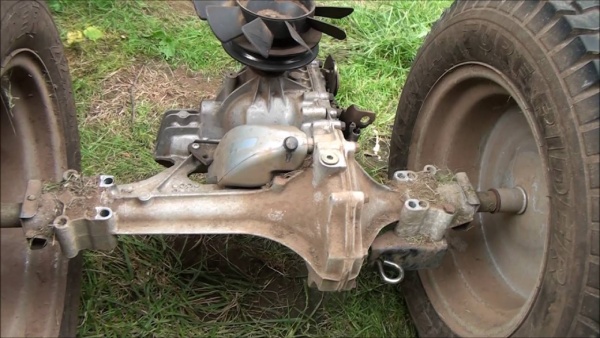Cutting down overgrown grass in your front and backyard is one way to improve the hospitality and exterior aesthetics of your house. The invention of the self-propelled lawn mower has provided an automatic approach for this task. But what if it breaks down?
How to Fix Self-Propelled Mower?
The Self-Propelled Lawn Mower
Having a maintained and clean-cut house landscape is a must for many homeowners. A perfectly trimmed grass lawn adds value and improves the overall appearance of a person’s property. It makes a house garden welcoming and visually appealing to casual visitors or daily passersby.
Advancements of modern times have resulted in more practical appliances being applied with motors and electronics that automate their functions like the one featured by a self-propelled lawn mower. Several benefits can be achieved with a durable lawn mower that can last a long duration of use while not reducing its performance of grass cutting activities. Many people seem content with push-type lawn mowers, but the self-propelled mower changes the game with the easing of most yard maintenance efforts.
Today’s self-propelled lawn mowers eliminate the labour of mowing an individual’s backyard. The automated mower runs on the activation of manual controls that uses a transmission to run the mower’s drive wheels. This enhanced attribute reduces all the work and sweat found when using a push mower as the self-propelled lawn mower tends to get the procedure of yard maintenance faster.
Modern self-propelled lawn mowers can have two-speed options known as single and variable speed. Activating a lever initiates the mower and causes it to move forward and can be directed in any direction where grass should be trimmed. They also come in the front, rear, or feature an all-wheel-drive that can be suitable with any kind of terrain or sloped landscape.
Troubleshooting a Self-Propelling Lawn Mower
If a gardener, homeowner, or landscape artist finds that the wheels of their lawn mower do not turn or function. Checks can be performed with its wheels, drive cable, and transmission. It is one of the most common difficulties encountered when operating a self-propelled lawn mower. Here is a list of parts to check to fix self-propelled lawn mower:
01. Transmissions of a Lawn Mower

The transmission of a lawn mower is similar to wheeled vehicles links the engine to the gears attached to the wheels of the mower. It connects these parts through a drive belt and is responsible for switching drive options from horizontal to vertical. The assembly typically incorporates a set of gears that sets the maximum velocity or drive speed of the lawn mower and the torque involved with its operation.
Driving or guiding a lawn mower to steep slopes, hills, and dusty surfaces may cause the transmission to be damaged or wear out easily. Symptoms of a dysfunctional transmission can be observed with:
- Grinding Gears
- Rough Operation
- Sudden Stops
- Difficulty Starting
- Transmission Pulley Rotation with no wheel activity
Parts are available for rebuilding a broken transmission if the damages applied to it are not that serious. Whole assemblies are available to replace the transmission if it really does not work at all.
02. Drive Cable of a Lawn Mower

The drive cable is a crucial component within the self-propelled lawn mower. It connects the transmission to the drive bail assigned to self-propel the lawn mower or even be responsible for changing its variable speed settings. A cast metal connector or service hooks links the cable in tension with the drive bail and transmission. Symptoms for drive cable damage are as follows:
- Snapping of the Cable
- Structural Breaks within the Hooks
- Breaking of the Metal Connectors
- Rust that affects Hooks and Connector integrity
- Corrosion due to Storage and Weather conditions
To check the functionality of a drive cable is with the drive bail. The drive bail usually returns to its stop position upon release. If not working, the cable might have snapped in two. Repairing a drive cable starts with the removal of the connector from the mower’s drive bail. Fasteners pre-installed are to be taken out and accessing the drive bail inside the transmission assembly can be completed by accessing underneath the mower or through a back hatch panel. Re-installment of a new and durable cable is done in reversed order.
03. Wheels of a Lawn Mower

The wheels of a self-propelled lawn mower are the typical cause of performance problems. The wheels attached to the mower may feature a built-in gear or a modular gear assembly that helps them turn or receive commands from the engine. Wear and tear may happen to the plastic material mostly used with manufacturing wheel gears. Damages may occur if the self-propelled lawn mower is driven through steep hills and thick foliage terrains.
Wheel replacement is an easy task. The hub cap of the wheel is detached to expose the wheel nut that keeps things together. The removal of the nut loosens the wheel and would slide off giving the opportunity for the wheel shaft to be cleansed. Install a new drive wheel into the wheel shaft by re-aligning the wheel gear with the drive gear. Carefully re-attach the wheel nut and the covering wheel cap.
Conclusion
Several homeowners now use a self-propelled lawn mower to eliminate heavy tasks and trim their grass yards with ease. It can be easily guided in any direction due to its automated performance and can accomplish the activity faster. Damages may occur if the mower is driven through sloped terrain, dusty surfaces, and thick-foliage with random shrubs and rocks. Troubleshooting can be done with various parts of the lawn mower with access to the right parts for replacement and consulting the user manual made by its manufacturer.
You may also like to read other blogs related to lawn care: